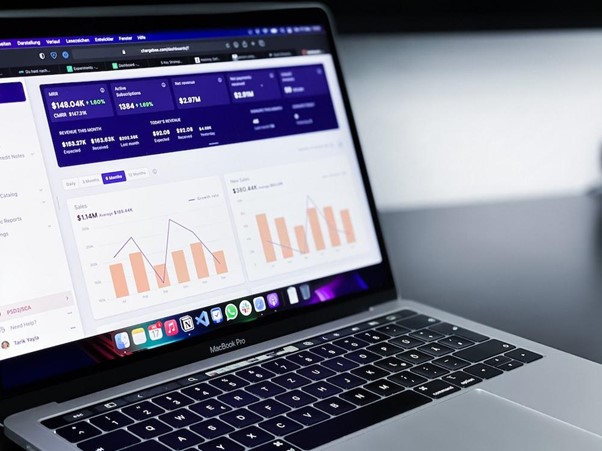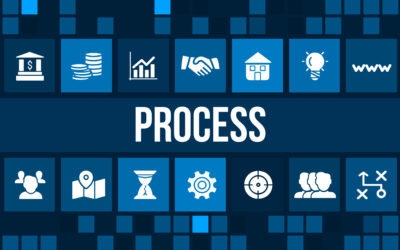2022 is here, and with it comes continued trends for the workplace. Since the start of the pandemic almost two years ago businesses have been adapting to the challenges that developed as a result. An article released by MIT Sloan Management Review suggests that over 55% of those asked believe COVID-19 has permanently changed how companies should think about business strategy.
Now that COVID-19 has transitioned through many phases, employers are displaying great flexibility and adaptability. The top three trends that can be seen across several industries are the continued remote work option, the growth of the contractor workforce, and collaborative intelligence for improving processes and increasing efficiencies. All three of these trends are continuing to take shape, shifting the landscape of business practices. While they all present a strong presence individually, they are intertwined and not mutually exclusive of one another. As businesses stretch their boundaries beyond their own organizational borders, they are realizing the benefit of an agile and robust team from outside their organization too.
Trend 1: The remote work option
Initially, when the pandemic began, there were so many unknowns. Depending on the industry determined how businesses could operate. It was soon learned that no matter what industry, in order to weather the storm, businesses needed to pivot to succeed. For those industries fortunate enough to lean into technology, accommodations to support remote working conditions occurred. Businesses started to prepare to accommodate for remote working and define what that meant for their workforce. An article posted on the SHRM website said, “As employers first sent people home in reaction to the spread of the coronavirus in February and March, many faced challenges with getting employees the equipment they needed and optimizing their VPN networks to ensure connectivity. ‘Once these issues were resolved, it was smooth sailing for many.’”

As businesses have shifted to remote work options, many of the logistical challenges that were once thought to be a barrier to a remote workforce have been overcome. Because of the necessity to work from home, businesses created innovative ways to create a safe environment during a time of uncertainty. When restrictions started to lift and it was deemed safe to be in larger groups, the workforce now could choose between working in-person or remotely instead of being forced into a decision. The same SHRM article stated, “Looking ahead, 83 percent of respondents said that even after the health crisis has passed, they plan to put more flexible work policies in place, such as allowing more people to work from home or letting them adjust their schedules.”
If working remotely proved anything, it’s that there is no longer a stigma or assumption that employees cannot be productive, contributing members of an organization when away from the office. This mindset shift merges with the next trend: the rise of the contractor workforce. When businesses realize that substantial work can be accomplished outside the office, hiring from outside the organizational boundaries becomes a common theme, too.
Trend 2: The rise of the contractor workforce
Organizations are shifting to a flexible structure that enables a swift response to change and incorporates freelance workers and remote employees as part of the organizational structure.

The COVID-19 crisis has challenged the traditional hierarchical organization where each role and function are specific and structured. As adaptation is a necessity, employees are performing functions outside their job descriptions and location. A Boston Consulting Group article says, “In 2021, almost half of all the companies we surveyed will outsource more work than they will do internally.” Successful businesses look at the tasks they can perform well, and at a reasonable cost, and look to hire outside of their organization for those tasks that make financial and strategic sense. Outsourcing defined functions and projects offer more flexibility and profitability.
Outsourcing is a great way to strengthen your in-house team with external support. As we have experienced the pandemic together globally, we will continue to lean into the global workforce to help strengthen our position and offerings.
ProsperSpark has written about this subject many times. A recent article titled, “When does outsourcing make sense?” outlines the process for identifying when the benefits from hiring outside your organization offer a positive impact. The three scenarios that were previously outlined include when your task list has grown significantly, when you can’t seem to get ahead or focus on your strengths, and when your business is suffering from inaction. Those are all solid baseline starting points, but additional considerations since the pandemic include when you need expertise outside of your current core competencies, when your company may be facing employee shortages, or when your company has the need to hire but cannot sustain the expenses that new employees bring.
Any economic article talking about recent employment rates will emphasize the worker shortage crises that America is facing after the brunt of the pandemic. Employment rates were affected significantly when COVID-19 unfolded, but since then, employers are struggling to find the workforce to fill the gaps across all industries. Utilizing consultant agencies to hire contractors can be a short-term band-aid or a long-term solution depending on the needs and employment trends. As businesses venture out trying new avenues of securing the talent they need, their experiences will be predictive of how the trends will develop.
Trend 3: Increased collaborative intelligence in the workplace
Collaborative intelligence will combine aptitude, and system efficiencies to boost productivity.

Business leaders are harnessing the power of technology, such as process automation, to become more efficient and sustainable. In this increased world of collaboration, businesses can assign machine intelligence to assist employees with costly, time-consuming, and repetitive tasks to maximize efficiency. While the idea of utilizing technology sounds robust and complicated, it can range from very minuscule tasks to ones that have significant functionality.
Pairing the previous trend of outsourcing with the trend of collaboration, an article posted by Deloitte explains it perfectly. “Not only due to COVID-19, but businesses today are also facing a rapidly evolving landscape, including regulatory changes, continuous advances in technology, and the adoption of more sophisticated approaches by authorities. These challenges are causing businesses to rethink the appropriate mix of in-house and external resources in efficiently managing essential operational processes with visibility, flexibility, transparency, and control.”
Identifying processes to be automated or improved is a necessary step to see a gained ROI. Being able to assign a cost value to a process will emphasize the value of automation. Something as simple as a process cost calculator can be used to calculate how much money and time is spent on performing repetitive tasks. Considering the hourly wage for the employee, how long a process takes, and how many times the employee performs the task will provide the expense of the task. As an example, if an employee makes $25 an hour, and performs one task every day that takes 15 minutes, an employer pays that employee $6 a day to perform that task. That doesn’t seem like too much, but when considered monthly, that cost is now $135. When looking at the big picture and calculating it annually, the simple $6/day task costs $1,625 annually. Imagine what the overall costs to a company may be if the pay were greater, the amount of time to do a repetitive task was longer, or the frequency was more.
At ProsperSpark, we’ve had the privilege of helping customers most recently with process improvement requests. The tasks that take just a few minutes out of a worker’s day adds up. Our consultants have assisted with various projects such as automating a timesheet for tracking employees’ pay and time, creating a sales tax report that automatically references a specific zip code to identify the city, county, and state taxes, and building templates to populate quotes for the sales force to utilize when building custom pricing details. Regardless of what type of consultant service you consider, making sure you have a clear idea of the financial impact for processes that could be automated allows for a better-informed decision. Understanding what process to improve and how much that translates to in dollars can make the decision to automate very clear.
If you are thinking about outsourcing or want to learn more, this article provides a step-by-step guide on selecting and outsourcing to an external expert consultant.

Conclusion
What does the workplace look like in 2022? The past few years are paving the way for what we can expect to see more of in 2022 and beyond. The ability to maneuver within the constraints given is essential to any business’s success.
The workplace continues to evolve. With the workforce proving that working remotely is a solid and viable option during times of turbulence, telecommuting is becoming more standardized and acceptable even when the option to return to work in-person is feasible.
As businesses have learned to function in a leaner and more agile manner, being able to utilize outside expertise is crucial. The benefits of hiring contractor employees allow for maneuvering through unknowns that cannot be foreseen. Having the expertise to strengthen your organization while not having to fully employ them is a win-win for the workforce.
Continual assessment of improving efficiencies and having a critical eye on how things are done will help improve any business’s bottom line. By evaluating current processes, focusing on the strategy, striving for improvement, the tasks that may seem minor in the grand scheme of the day can add up to major costs when calculated on an annual basis. Performing cost-benefit analysis to truly see how automation and collaboration can reduce waste is a trend that will continue to be a common theme.
The trends that are taking shape today will be the foundation that businesses are built on in the future. As companies continually adjust their practices to remain competitive and profitable, we will see innovative and nontraditional solutions constantly evolve.








